|
|
|
|
|
Galleria Tassonomica
di
Natura Mediterraneo
|
 Nota! La determinazione degli insetti necessita quasi sempre di un'indicazione geografica e temporale precisa. Nota! La determinazione degli insetti necessita quasi sempre di un'indicazione geografica e temporale precisa.
Invitiamo quindi gli utenti ad inserire questi dati ogni volta che viene richiesta una determinazione o viene postata una foto di un insetto. I dati forniti dagli utenti ci consentiranno anche di attribuire un valore scientifico alle segnalazioni, contribuendo a migliorare e integrare le attuali conoscenze sulla distribuzione delle specie postate.
|
|
| Autore |
 Discussione Discussione  |
|
|
Amir
Utente Senior
   

Città: Tel-Aviv
Regione: Israel

785 Messaggi
Tutti i Forum |
|
|
Amir
Utente Senior
   

Città: Tel-Aviv
Regione: Israel

785 Messaggi
Tutti i Forum |
 Inserito il - 06 dicembre 2008 : 13:04:13 Inserito il - 06 dicembre 2008 : 13:04:13


|
Set #2 Male
Immagine:
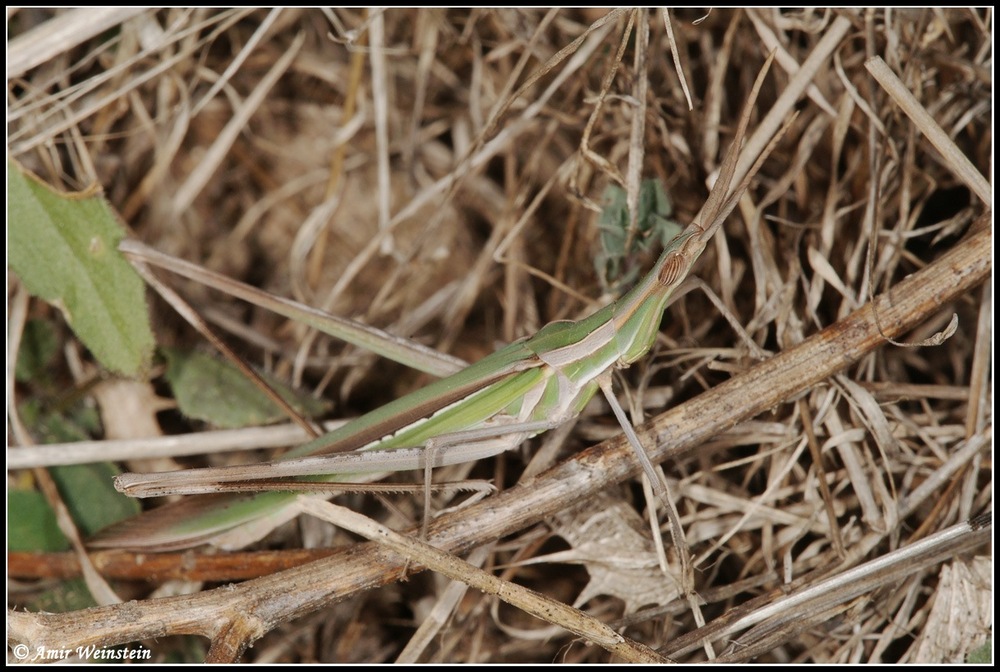
222,42 KB
Immagine:
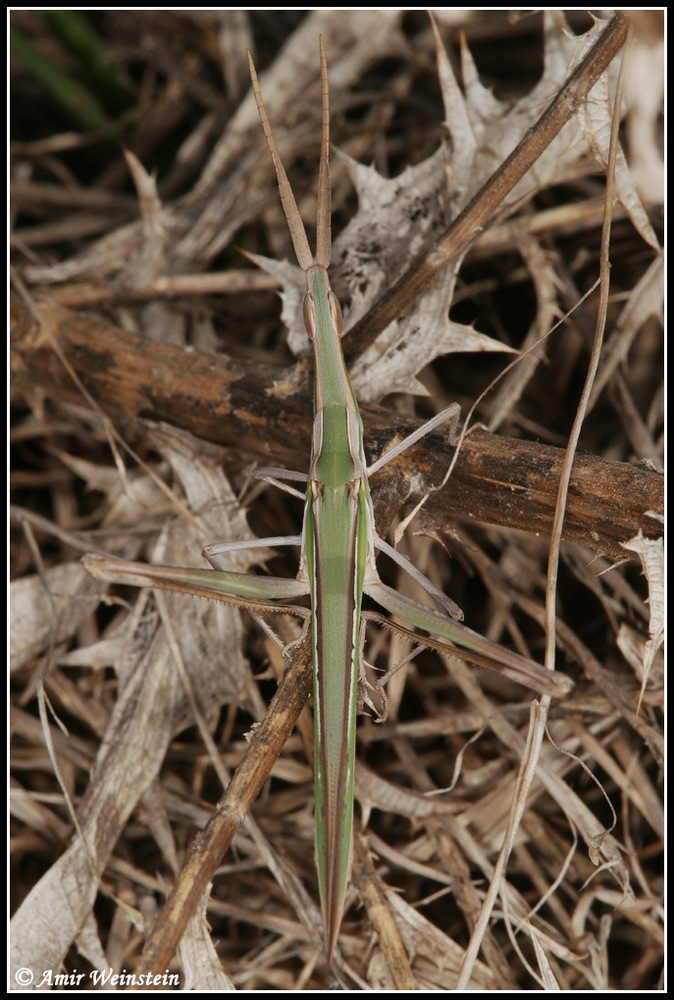
208,9 KB
Immagine:
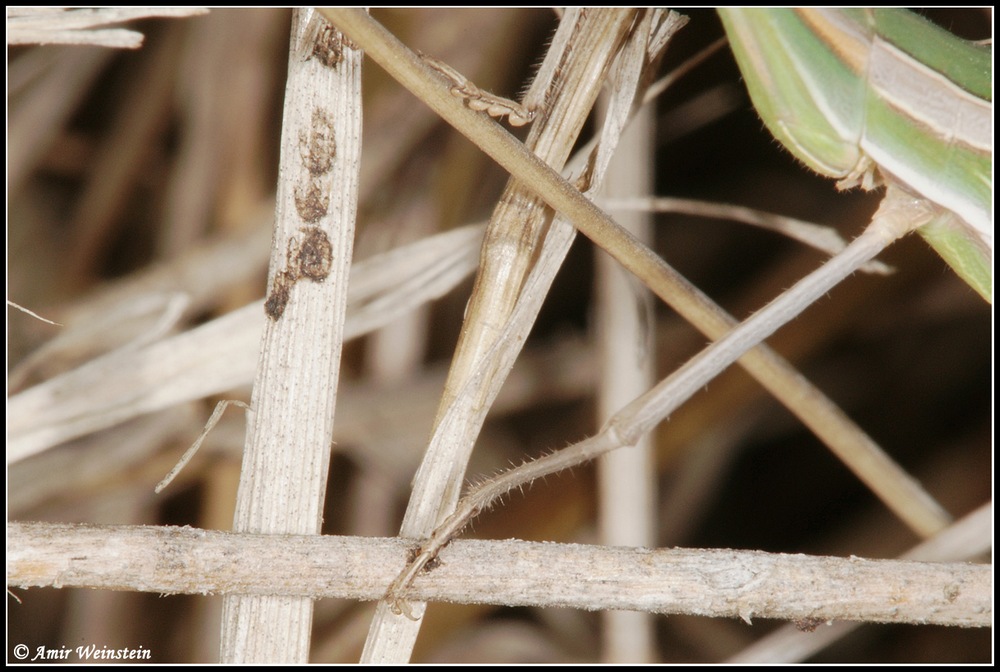
177,26 KB
my albums:
Link
My insects blog (in Hebrew)
Link |
 |
|
|
Amir
Utente Senior
   

Città: Tel-Aviv
Regione: Israel

785 Messaggi
Tutti i Forum |
 Inserito il - 06 dicembre 2008 : 13:08:10 Inserito il - 06 dicembre 2008 : 13:08:10


|
Set #3 Female
from same location of #2
Immagine:
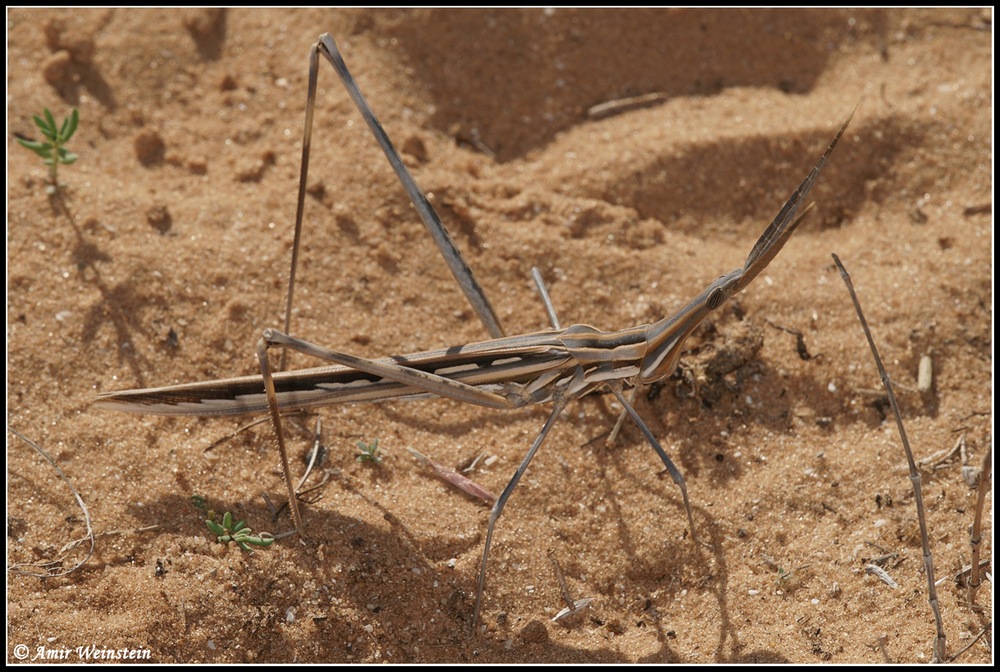
267,19 KB
Immagine:
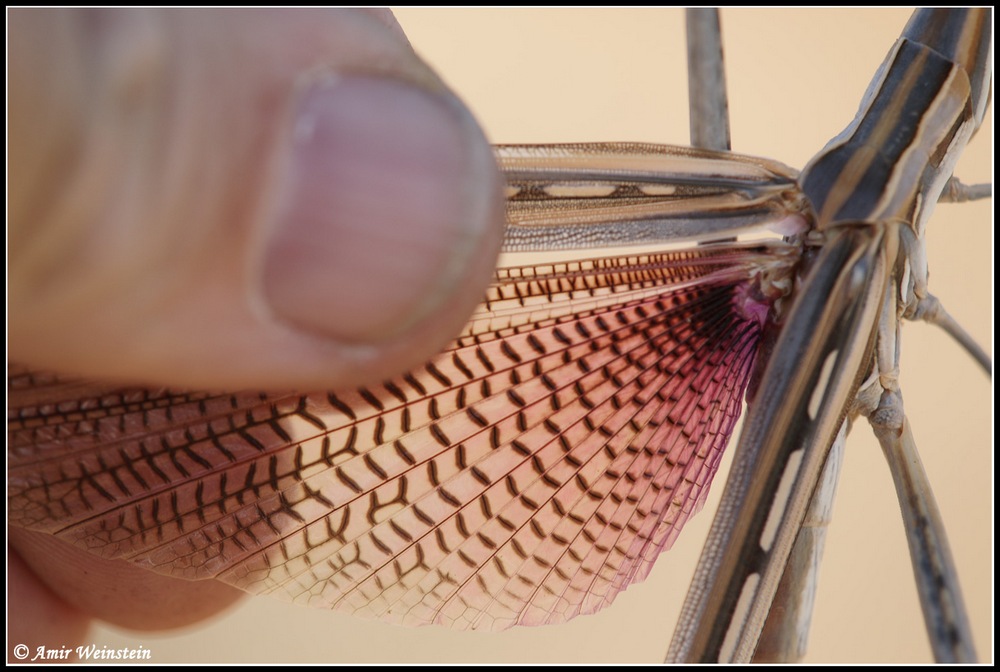
161,96 KB
my albums:
Link
My insects blog (in Hebrew)
Link |
 |
|
|
Mantis
Moderatore
   

Città: Bologna
Prov.: Bologna
Regione: Emilia Romagna

2214 Messaggi
Flora e Fauna |
 Inserito il - 07 dicembre 2008 : 09:59:24 Inserito il - 07 dicembre 2008 : 09:59:24


|
Hi Amir, sorry for my bad English but I don't speak at all  . .
As for your photos, I do not know the Orthoptera of Israel, but the first two species belong to the Acrida genus, while the last species (last two photos) belongs certainly to the Truxalis genus.
Very nice picture of the hind wing, with cross veins brown-colored, typical of Truxalis genus  . .
Thanks, google translate (un pò modificato da me)  . .
Traduzione per gli Italiani  : :
Ciao Amir, scusa per il mio cattivo inglese, ma non lo parlo affatto.
Per quanto riguarda le tue foto, io non conosco gli Ortotteri d'Israele, ma le prime due specie appartengono al genere Acrida, mentre l'ultima specie (ultime due foto) appartiene sicuramente al genere Truxalis.
Molto bella la foto dell'ala posteriore, con le venature trasversali colorate di bruno, tipico del genere Truxalis.
Chissà cosa avrò combinato con l'iglese   . .
 Carmine Carmine
Dare un nome agli organismi che osserviamo, identificarli, riconoscerli, è innanzitutto un esercizio che appaga l'innato desiderio di scoperta e conoscenza, insito nell'animo umano (Fontana - Cavallette, grilli, mantidi e insetti affini del Veneto). |
 |
|
|
Amir
Utente Senior
   

Città: Tel-Aviv
Regione: Israel

785 Messaggi
Tutti i Forum |
 Inserito il - 07 dicembre 2008 : 10:41:27 Inserito il - 07 dicembre 2008 : 10:41:27


|
Hi Carmine
Thanks for the answer
There is a problems with u r answer
the last 2 specimens photo at same location, even at near time (a few min. different)last weekend
Those Orthoptera are very common in this location (stabilized coastal sends)
If I relay on the wing pattern and Arolium these specimen should be Truxalis Procera (our local Truxalis sp in sends habitat - females has a purple wings)
The first photo set taken in coastal area last year but more north and
according the Arolium this should be Acrida bicolor (our local Acrida sp)
The problem for me is that for an amateur like me not all the clues r settle with the look of the specimens so this is why I'm confuse
for example the Prothorax of the 2 specs should look different but Im not find a constant dissimilarity in the Prothorax in others specimens photos I have
Amir
my albums:
Link
My insects blog (in Hebrew)
Link |
 |
|
|
Amir
Utente Senior
   

Città: Tel-Aviv
Regione: Israel

785 Messaggi
Tutti i Forum |
 Inserito il - 11 dicembre 2008 : 18:44:17 Inserito il - 11 dicembre 2008 : 18:44:17


|
Ciao
adding wing photo of a Truxalis cf Procera male
the wings r yellowish (difficult to see with the background)
I'll be happy to get more comments regarding my assumption i wrote in my last post
Immagine:
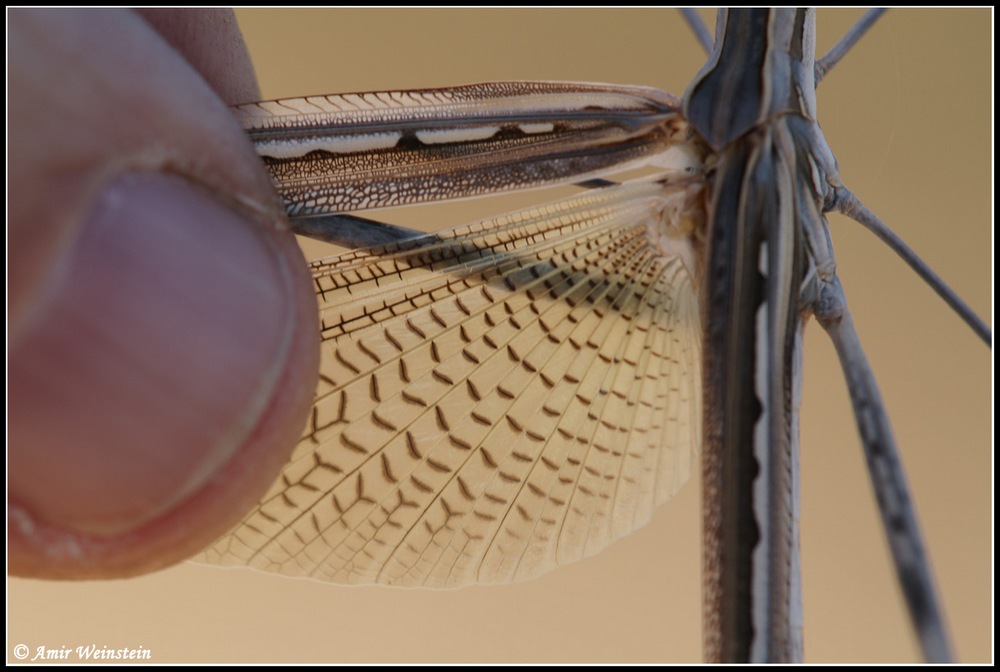
136,5 KB
Grazie
my albums:
Link
My insects blog (in Hebrew)
Link |
 |
|
|
Mantis
Moderatore
   

Città: Bologna
Prov.: Bologna
Regione: Emilia Romagna

2214 Messaggi
Flora e Fauna |
 Inserito il - 12 dicembre 2008 : 10:06:34 Inserito il - 12 dicembre 2008 : 10:06:34


|
| Messaggio originario di Amir:
I'll be happy to get more comments regarding my assumption i wrote in my last post
|
Hi Amir,
In fact is not easy to distinguish the two genus (Truxalis and Acrida) by the shape of pronoto (see this post), then it is normal to be confused  . .
I really do not distinguish these genus by the shape of Arolium, because the Italians genus are distinct by the shape of pronoto and by the color of the cross veins, as is clearly visible from your beautiful photos  . .
________________________________________________________________________
Infatti, Amir, non è molto semplice distinguere i due generi (Truxalis e Acrida) dalla forma del pronoto (vedi questo post), quindi è normale essere confusi .
Sinceramente non so distinguere questi generi dalla forma dell'arolio, perchè i generi italiani si distinguono dalla forma del pronoto e dal colore delle venature trasversali delle ali posteriori, come è chiaramente visibile dalle tue belle foto.
 Carmine Carmine
Dare un nome agli organismi che osserviamo, identificarli, riconoscerli, è innanzitutto un esercizio che appaga l'innato desiderio di scoperta e conoscenza, insito nell'animo umano (Fontana - Cavallette, grilli, mantidi e insetti affini del Veneto). |
 |
|
| |
 Discussione Discussione  |
|
|
|
 Natura Mediterraneo Natura Mediterraneo |
© 2003-2024 Natura Mediterraneo |
 |
|
Leps.it | Herp.it | Lynkos.net
|

 Forum
|
Registrati
|
Msg attivi
|
Msg Recenti
|
Msg Pvt
|
Utenti
|
Galleria |
Map |
Forum
|
Registrati
|
Msg attivi
|
Msg Recenti
|
Msg Pvt
|
Utenti
|
Galleria |
Map |